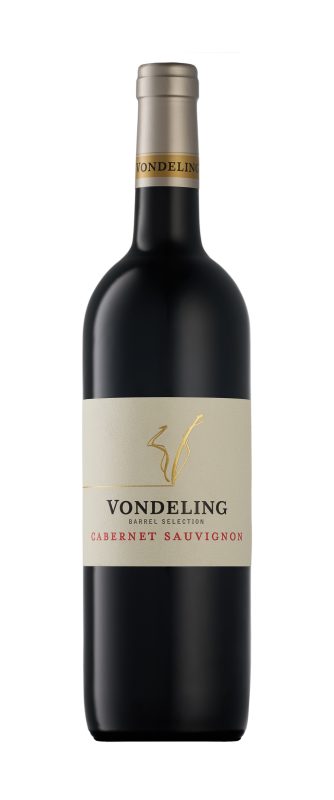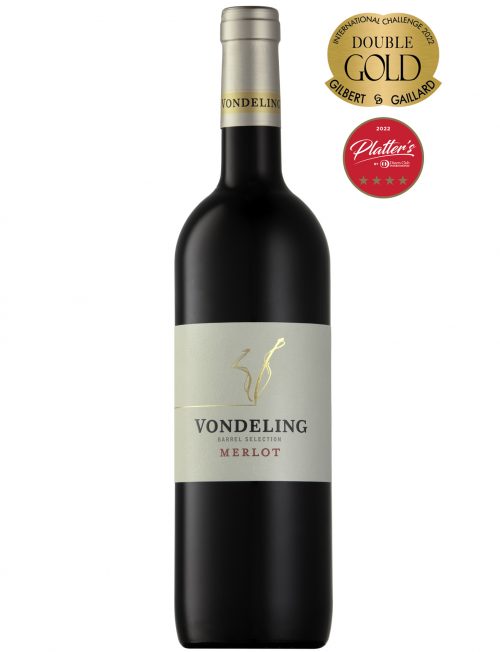-
Out of stock
 (100% Chenin Blanc) VINEYARDS This wine is made from a single, site-specific vineyard, planted in ancient granitic soils. It’s the highest vineyard on Vondeling and offers magnificent views of our beautiful Voor Paardeberg region. The elevation of the vines, as well as the steepness of the slope and a Southfacing aspect, ensure that this is our coolest location. The vineyard has poor vigour and the vines are shy yielding. This ensures tiny berries with concentrated flavour and vibrant acidity. VINIFICATION The grapes are hand-picked in mid-February with a ripeness of 23.5 Balling. Each bunch is pre-chilled before being whole bunch pressed. The juice remains unsettled and is transferred immediately to French Oak barrels for fermentation. At no stage is yeast or acid added and the “Dirty juice” acts as a nutrient source for the indigenous yeast. It also imparts considerable structure and gives the wine its golden appearance. During the wine’s winter maturation on the gross lees, it normally undergoes a high degree of Malolactic fermentation. This process softens the wine and ensures the harmonious integration of the oak. After winter, the finest barrels are selected, racked and returned for an additional 6 months in barrel. In January, the barrels are screened a second time and the chosen few are prepared for bottling. Due to the fullness and structure of this wine, we insist on a minimum of 9 months rest in bottle before release for purchase. FURTHER REMARKS The Bowwood motto is to produce singular, sight-specific wines that exemplify not only the best examples of their type in South Africa but of those of the world. Special attention is given to how the wine will mature over time and we highly recommend additional cellaring to release the wine’s full potential. TASTING NOTES & CELLARING & FOOD PAIRING Light dances through this wine’s bright, gold leaf colour. It captures, bends and reflects with the same hypnotic rhythm as a fresh mountain stream in the late light of summer. A cerebral experience, the wine is initially timid on the nose, but soon explodes kaleidoscopically in the back of the brain. Delicate apricot, yellow pear and cut straw aromas are fabulously supported by denser greengage, crushed cumin, raw almond and wild celery. The palate is luxurious and full, with a chalky dryness and vast savoury spectrum. Its mineral freshness showcases honeyed tangerine, roasted corn, ripe quince and sweet cashew. Savoury notes include freshly minced bay leaf and fine ground nutmeg. We recommend this wine be paired with nut crusted swordfish and saffron infused risotto or crispy, shredded duck on spring onion pancakes with tomato salsa. Accolades 2019 Vintage: 2022 Platter's Guide - 4.5 Stars 2022 Wine Cellar - 93pts 2022 Gilbert Gaillard - Double Gold (90pts) 2021 Winemag - 87pts 2021 Tim Atkin - 90pts 2021 Platter's Guide - 4.5 Stars 2020 Winemag 93 Points Analysis pH 3.6 Total Acidity 5.3 g/l Residual Sugar 4.4 g/l Alcohol 13.8 % Download Tasting Sheet
(100% Chenin Blanc) VINEYARDS This wine is made from a single, site-specific vineyard, planted in ancient granitic soils. It’s the highest vineyard on Vondeling and offers magnificent views of our beautiful Voor Paardeberg region. The elevation of the vines, as well as the steepness of the slope and a Southfacing aspect, ensure that this is our coolest location. The vineyard has poor vigour and the vines are shy yielding. This ensures tiny berries with concentrated flavour and vibrant acidity. VINIFICATION The grapes are hand-picked in mid-February with a ripeness of 23.5 Balling. Each bunch is pre-chilled before being whole bunch pressed. The juice remains unsettled and is transferred immediately to French Oak barrels for fermentation. At no stage is yeast or acid added and the “Dirty juice” acts as a nutrient source for the indigenous yeast. It also imparts considerable structure and gives the wine its golden appearance. During the wine’s winter maturation on the gross lees, it normally undergoes a high degree of Malolactic fermentation. This process softens the wine and ensures the harmonious integration of the oak. After winter, the finest barrels are selected, racked and returned for an additional 6 months in barrel. In January, the barrels are screened a second time and the chosen few are prepared for bottling. Due to the fullness and structure of this wine, we insist on a minimum of 9 months rest in bottle before release for purchase. FURTHER REMARKS The Bowwood motto is to produce singular, sight-specific wines that exemplify not only the best examples of their type in South Africa but of those of the world. Special attention is given to how the wine will mature over time and we highly recommend additional cellaring to release the wine’s full potential. TASTING NOTES & CELLARING & FOOD PAIRING Light dances through this wine’s bright, gold leaf colour. It captures, bends and reflects with the same hypnotic rhythm as a fresh mountain stream in the late light of summer. A cerebral experience, the wine is initially timid on the nose, but soon explodes kaleidoscopically in the back of the brain. Delicate apricot, yellow pear and cut straw aromas are fabulously supported by denser greengage, crushed cumin, raw almond and wild celery. The palate is luxurious and full, with a chalky dryness and vast savoury spectrum. Its mineral freshness showcases honeyed tangerine, roasted corn, ripe quince and sweet cashew. Savoury notes include freshly minced bay leaf and fine ground nutmeg. We recommend this wine be paired with nut crusted swordfish and saffron infused risotto or crispy, shredded duck on spring onion pancakes with tomato salsa. Accolades 2019 Vintage: 2022 Platter's Guide - 4.5 Stars 2022 Wine Cellar - 93pts 2022 Gilbert Gaillard - Double Gold (90pts) 2021 Winemag - 87pts 2021 Tim Atkin - 90pts 2021 Platter's Guide - 4.5 Stars 2020 Winemag 93 Points Analysis pH 3.6 Total Acidity 5.3 g/l Residual Sugar 4.4 g/l Alcohol 13.8 % Download Tasting Sheet -
 (60% Chenin Blanc, 23% Viognier, 11% Grenache Blanc & 6% Roussanne) It is named in honour of Babiana Noctiflora, a rare species of fynbos found only on the Paardeberg Mountain. It has a delicate yellow flower that releases its scent in the evenings to attract a scarce moth for pollination. The Syngrapha Circumflexa of the Noctuidae moth family is also known as an Owlet moth. THE NAME BABIANA Babiana Noctiflora belongs to the Iris family. The name Babiana is derived from the Dutch ‘baviaantje’, meaning 'little baboon', because baboons were seen preferentially eating the corms of these plants. This species has lost its habitat to vineyards and fruit orchards in the past, but at Vondeling we conserve this endangered species VINEYARDS Made predominantly from Chenin blanc, picked from a single block of old vines (planted in 1987). Their age and low yield ensure consistent quality and concentration, which is why it form the backbone of our blend. The fullness of the Chenin is tempered by the verve and high aromatics of the Grenache Blanc, Viognier, and Roussanne. VINIFICATION All grapes are hand-picked at optimum ripeness and refrigerated for 24hrs before being processed. The Chenin is whole bunch press and no Sulphur added to promote wild yeast development. The unsettled juice is then rapidly transferred to barrel for natural fermentation. Although a nerve-racking process, this method lends structure, complexity, and longevity to the wine. The Grenache Blanc, Roussanne, and Viognier are destemmed and cold fermented for 8 days on the skins before being basket pressed directly to barrel to complete fermentation. The wine undergoes full malolactic fermentation and is matured 12 months on the lees before being racked, blended, and bottled TASTING NOTES & CELLARING & FOOD PAIRING The wine has a bright yellow colour. It has a smoky and toasty nose with hints of stone fruit. The palate is full and creamy, with well-integrated acidity followed by vanilla on the aftertaste. Well use of oak allows for some subtle toasty notes on the palate. This serious and complex wine pairs well with rabbit in white wine sauce and shallots or simple, aromatic Asian dishes and rich seafood. Drink through 2027 ACCOLADES 2020 Vintage: 2021 Tim Atkin 91 Points 2022 Platter’s Guide – 4.5 Stars (91pts) 2021 Vintage: 2022 Gilbard & Gaillard-Double Gold (92Pts) 2023 Platter's Guide-4.5 Stars (93 pts) Analysis pH 3.34 Total Acidity 5.8 g/l Residual Sugar 3.6 g/l Alcohol 13.28 % Download Tasting Sheet
(60% Chenin Blanc, 23% Viognier, 11% Grenache Blanc & 6% Roussanne) It is named in honour of Babiana Noctiflora, a rare species of fynbos found only on the Paardeberg Mountain. It has a delicate yellow flower that releases its scent in the evenings to attract a scarce moth for pollination. The Syngrapha Circumflexa of the Noctuidae moth family is also known as an Owlet moth. THE NAME BABIANA Babiana Noctiflora belongs to the Iris family. The name Babiana is derived from the Dutch ‘baviaantje’, meaning 'little baboon', because baboons were seen preferentially eating the corms of these plants. This species has lost its habitat to vineyards and fruit orchards in the past, but at Vondeling we conserve this endangered species VINEYARDS Made predominantly from Chenin blanc, picked from a single block of old vines (planted in 1987). Their age and low yield ensure consistent quality and concentration, which is why it form the backbone of our blend. The fullness of the Chenin is tempered by the verve and high aromatics of the Grenache Blanc, Viognier, and Roussanne. VINIFICATION All grapes are hand-picked at optimum ripeness and refrigerated for 24hrs before being processed. The Chenin is whole bunch press and no Sulphur added to promote wild yeast development. The unsettled juice is then rapidly transferred to barrel for natural fermentation. Although a nerve-racking process, this method lends structure, complexity, and longevity to the wine. The Grenache Blanc, Roussanne, and Viognier are destemmed and cold fermented for 8 days on the skins before being basket pressed directly to barrel to complete fermentation. The wine undergoes full malolactic fermentation and is matured 12 months on the lees before being racked, blended, and bottled TASTING NOTES & CELLARING & FOOD PAIRING The wine has a bright yellow colour. It has a smoky and toasty nose with hints of stone fruit. The palate is full and creamy, with well-integrated acidity followed by vanilla on the aftertaste. Well use of oak allows for some subtle toasty notes on the palate. This serious and complex wine pairs well with rabbit in white wine sauce and shallots or simple, aromatic Asian dishes and rich seafood. Drink through 2027 ACCOLADES 2020 Vintage: 2021 Tim Atkin 91 Points 2022 Platter’s Guide – 4.5 Stars (91pts) 2021 Vintage: 2022 Gilbard & Gaillard-Double Gold (92Pts) 2023 Platter's Guide-4.5 Stars (93 pts) Analysis pH 3.34 Total Acidity 5.8 g/l Residual Sugar 3.6 g/l Alcohol 13.28 % Download Tasting Sheet -
Out of stock
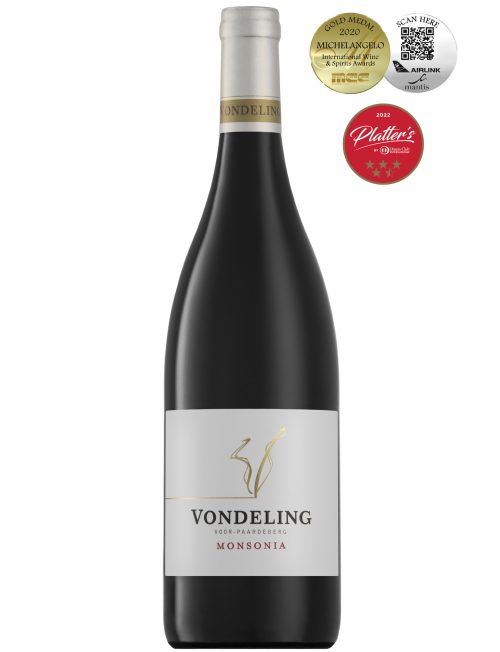 (Shiraz 60%, Mourvédre 23%, Carignan 10% & Grenache Noir 7%) Vondeling Monsonia is named after Monsonia Speciosa, a very rare species of fynbos (vegetation type occurring in the Western Cape region of South Africa) found in the Paardeberg mountain, the home of Vondeling wines. THE NAME MONSONIA The flower was named after Lady Anne Monson, the great-grandchild of King Charles II. Controversially, her first marriage was dissolved, due to the birth of an illegitimate child but she soon remarried Colonel George Monson of the Indian Military. She was known as a “remarkable lady botanist” and was instrumental in translating Linnaeus’s famous “Philosophia Botanica”. On her way to Calcutta, she visited the Cape of Good Hope and accompanied seasoned collector of South African plants, Carl Peter Thunberg, on several expeditions around the Cape. In 1774, he named the Monsonia species of plants after her. VINEYARDS The Shiraz vines grow in ancient, well-weathered granite soils on southeast-facing slopes – ideal for our warm South African climate. In total, six clones of Shiraz can be found on the farm and only the best performing clones go into the final blend. Typically, each clone contributes different characteristics to the wine and the different blocks are picked at varying degrees of ripeness, best suited to their character. The Mourvedre, Carignan, and Grenache are best adapted to hot sun and are grown as bush vines on North East-facing slopes. Highly selective hand-picking guarantees that only the best fruit arrives at the winery. VINIFICATION After being chilled overnight, bunches are partially destemmed, but not crushed, and whole berry fermentation takes place in open-top fermentation tanks. An initial two-day period of cold soaking is applied before wild yeast fermentation is allowed to commence. During fermentation, hand plunging, commonly known as "punch downs" is the method of mixing and extraction. After fermentation, the wine is pressed in a traditional boutique-size basket press. All wine is then transferred directly to barrel where malolactic fermentation takes place. Only large format French oak barrels are used, with about one-third new and the rest 2nd and 3rd fill. The wine is allowed to mature for 16 months before a final barrel selection, blending and bottling takes place TASTING NOTES & CELLARING & FOOD PAIRING Vibrant and clear charcoal red with beautifully viscous legs clinging to the glass. Each grape component vies for attention in this kaleidoscopic bouquet. Sweet Lillies and rose-petal Turkish delight from the Grenache. Plush black currant and blueberries from the Carignan. All wrapped in a velvety blanket of red berries and soft spice from the Shiraz. A smooth, velvety palate devoid of harsh or grippy tannin. Red cherry candy and sweet plumb at the fore with a soft plush center and subtle spice with roasted coconut at the end. Well paired with a mature steak, barbequed over a hotbed of coals and served with sauteed baby mushrooms, or try a hearty, slow-cooked pork belly with root vegetables and tomatoes. Accolades 2016 Vinatge:
(Shiraz 60%, Mourvédre 23%, Carignan 10% & Grenache Noir 7%) Vondeling Monsonia is named after Monsonia Speciosa, a very rare species of fynbos (vegetation type occurring in the Western Cape region of South Africa) found in the Paardeberg mountain, the home of Vondeling wines. THE NAME MONSONIA The flower was named after Lady Anne Monson, the great-grandchild of King Charles II. Controversially, her first marriage was dissolved, due to the birth of an illegitimate child but she soon remarried Colonel George Monson of the Indian Military. She was known as a “remarkable lady botanist” and was instrumental in translating Linnaeus’s famous “Philosophia Botanica”. On her way to Calcutta, she visited the Cape of Good Hope and accompanied seasoned collector of South African plants, Carl Peter Thunberg, on several expeditions around the Cape. In 1774, he named the Monsonia species of plants after her. VINEYARDS The Shiraz vines grow in ancient, well-weathered granite soils on southeast-facing slopes – ideal for our warm South African climate. In total, six clones of Shiraz can be found on the farm and only the best performing clones go into the final blend. Typically, each clone contributes different characteristics to the wine and the different blocks are picked at varying degrees of ripeness, best suited to their character. The Mourvedre, Carignan, and Grenache are best adapted to hot sun and are grown as bush vines on North East-facing slopes. Highly selective hand-picking guarantees that only the best fruit arrives at the winery. VINIFICATION After being chilled overnight, bunches are partially destemmed, but not crushed, and whole berry fermentation takes place in open-top fermentation tanks. An initial two-day period of cold soaking is applied before wild yeast fermentation is allowed to commence. During fermentation, hand plunging, commonly known as "punch downs" is the method of mixing and extraction. After fermentation, the wine is pressed in a traditional boutique-size basket press. All wine is then transferred directly to barrel where malolactic fermentation takes place. Only large format French oak barrels are used, with about one-third new and the rest 2nd and 3rd fill. The wine is allowed to mature for 16 months before a final barrel selection, blending and bottling takes place TASTING NOTES & CELLARING & FOOD PAIRING Vibrant and clear charcoal red with beautifully viscous legs clinging to the glass. Each grape component vies for attention in this kaleidoscopic bouquet. Sweet Lillies and rose-petal Turkish delight from the Grenache. Plush black currant and blueberries from the Carignan. All wrapped in a velvety blanket of red berries and soft spice from the Shiraz. A smooth, velvety palate devoid of harsh or grippy tannin. Red cherry candy and sweet plumb at the fore with a soft plush center and subtle spice with roasted coconut at the end. Well paired with a mature steak, barbequed over a hotbed of coals and served with sauteed baby mushrooms, or try a hearty, slow-cooked pork belly with root vegetables and tomatoes. Accolades 2016 Vinatge:2020 Platter’s Guide – 4.5 Stars 2019 Michelangelo – Gold 2019 Winemag - 93pts
2018 Vintage:2021 Platter’s Guide – 4.5 Stars / 94 Points 2020 Michelangelo - Gold 2022 Tim Atkin 90 Pts 2022 Michelangelo Awards - Gold 2023 Platter’s Guide 4,5 Stars (92 Pts)
2019 Vintage: 2024 Platter’s Guide 4.5 Stars (92 Pts) Analysis pH 3.50 Total Acidity 5.3 g/l Residual Sugar 3.3 g/l Alcohol 13.72 % Download Tasting Sheet -
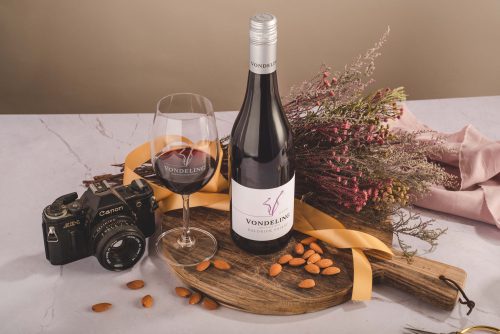

Petit Gift Pack (2 pack option)
R325.00 (incl. VAT)
Option 1: Petit Chenin Blanc 2024 & Baldrick Shiraz 2022 OR Option 2: Petit Rouge Merlot 2022 & Sauvignon Blanc 2024 OR Option 3: Petit Chenin Blanc 2024 & Rose 2024 OR Option 4: Petit Rouge Merlot 2022 & Rose 2024 Packaged in a sophisticated, branded 2-pack cardboard wine carrier, finished with ribbon & fynbos from the farm. -

(Limited to 15 cases only)
(Shiraz 50%, Mourvédre 30%, Carignan 7% & Grenache Noir 13%) Vondeling Monsonia is named after Monsonia Speciosa, a very rare species of fynbos (vegetation type occurring in the Western Cape region of South Africa) found in the Paardeberg mountain, the home of Vondeling wines. THE NAME MONSONIA The flower was named after Lady Anne Monson, the great-grandchild of King Charles II. Controversially, her first marriage was dissolved, due to the birth of an illegitimate child but she soon remarried Colonel George Monson of the Indian Military. She was known as a “remarkable lady botanist” and was instrumental in translating Linnaeus’s famous “Philosophia Botanica”. On her way to Calcutta, she visited the Cape of Good Hope and accompanied seasoned collector of South African plants, Carl Peter Thunberg, on several expeditions around the Cape. In 1774, he named the Monsonia species of plants after her. VINEYARDS The Shiraz vines grow in ancient, well-weathered granite soils on southeast-facing slopes – ideal for our warm South African climate. In total, six clones of Shiraz can be found on the farm and only the best performing clones go into the final blend. Typically, each clone contributes different characteristics to the wine and the different blocks are picked at varying degrees of ripeness, best suited to their character. The Mourvedre, Carignan, and Grenache are best adapted to hot sun and are grown as bush vines on North East-facing slopes. Highly selective hand-picking guarantees that only the best fruit arrives at the winery. VINIFICATION After being chilled overnight, bunches are partially destemmed, but not crushed, and whole berry fermentation takes place in open-top fermentation tanks. An initial two-day period of cold soaking is applied before wild yeast fermentation is allowed to commence. During fermentation, hand plunging, commonly known as "punch downs" is the method of mixing and extraction. After fermentation, the wine is pressed in a traditional boutique-size basket press. All wine is then transferred directly to barrel where malolactic fermentation takes place. Only large format French oak barrels are used, with about one-third new and the rest 2nd and 3rd fill. The wine is allowed to mature for 16 months before a final barrel selection, blending and bottling takes place. TASTING NOTES & CELLARING & FOOD PAIRING Vibrant and clear charcoal red with beautifully viscous legs clinging to the glass. Each grape component vies for attention in this kaleidoscopic bouquet. Sweet Lillies and rose-petal Turkish delight from the Grenache. Plush black currant and blueberries from the Carignan. All wrapped in a velvety blanket of red berries and soft spice from the Shiraz. A smooth, velvety palate devoid of harsh or grippy tannin. Red cherry candy and sweet plumb at the fore with a soft plush center and subtle spice with roasted coconut at the end. Well paired with a mature steak, barbequed over a hotbed of coals and served with sauteed baby mushrooms, or try a hearty, slow-cooked pork belly with root vegetables and tomatoes. ACCOLADES 2017 Vintage: 2020 Michelangelo Awards - Gold 2021 Platter Guide 4,5 Stars (94 Pts) Analysis pH 3.44 Total Acidity 5.7 g/l Residual Sugar 2.9 g/l Alcohol 14.16 % DOWNLOAD TASTING NOTE -
 (100% Chardonnay) VINEYARDS Vondeling Rurale is comprised of 100% Chardonnay . The Chardonnay grapes originate from a single block, located on a south-west facing slope on the decomposed granite soils of the Paardeberg Mountain. Unlike Mèthode Cap Classique, Mèthode Ancestrale grapes are harvested with a potential alcohol of 12% (rather than 9%). This promotes a fuller, more rounded pallet with superior fruit expression without compromising on natural vibrancy and freshness. VINIFICATION Natural fermentation begins in a stainless-steel tank and when only a small, but critical amount of sugar remains, the fermenting wine is bottled and capped. Bottling must be done at the precise moment when there is enough remaining sugar to create a healthy, vibrant mousse, but not so much as to cause the bottles to explode. This single, continuous fermentation, using fruit which is approximately three weeks riper than the base wine used to make Mèthode Cap Classique, is what makes Mèthode Ancestrale unique. The wine is matured on its lees for 3 years before riddling and disgorging. Autolysis of the yeast cells increases richness, palate weight and creaminess to the wine. After being hand riddled over a one-month period, it is disgorged and topped using our flagship white blend, Babiana from the 2013 vintage, as an alternative to liqueur d’expedition. The name Rurale is the original name for what was later recognized by the French A.O.C as Mèthode Ancestrale. We love the implication that this is an uncomplicated, yet pure expression of both the grape and its origins. Rurale was the first recognized Mèthode Ancestrale to be produced in South Africa and remains the leader in this category. Vondeling was instrumental in drafting the technical description, which allowed this new category to be recognized in 2014. It is a highly labour-intensive way to produce sparkling wine, and for this reason, only 2750 bottles were produced. All grapes are grown and vinified on Vondeling Farm and Cellar. TASTING NOTES & CELLARING & FOOD PAIRING The wine displays a pale straw colour typical of bubbly that has enjoyed the benefits of extended lees maturation. Tiny, pearl-string bubbles and fine mousse abound. Beautiful aromas of lavender honey, lime, crisp apple with freshly baked pastry and toasted almonds on the nose. The palate is bright and zippy with vibrant acidity and a soft, creamy mouthfeel. Fresh apple appears again along with pears, confected lemon and a long, rich, lingering after taste. Rurale can be paired with smoked salmon, fennel roasted trout or fresh oysters with a squeeze of lemon, salt, and pepper. Accolades: 2018 Vintage: 2021 SA Sparkling Wine Championships – Double Gold 2021 Michelangelo- Gold 2022 Platter Wine Guide 2020 – 4,5 stars (93pts) Analysis: pH 3.42 Total Acidity 7.2 g/l Residual Sugar 1.4 g/l Alcohol 11.36 % Download Tasting Sheet
(100% Chardonnay) VINEYARDS Vondeling Rurale is comprised of 100% Chardonnay . The Chardonnay grapes originate from a single block, located on a south-west facing slope on the decomposed granite soils of the Paardeberg Mountain. Unlike Mèthode Cap Classique, Mèthode Ancestrale grapes are harvested with a potential alcohol of 12% (rather than 9%). This promotes a fuller, more rounded pallet with superior fruit expression without compromising on natural vibrancy and freshness. VINIFICATION Natural fermentation begins in a stainless-steel tank and when only a small, but critical amount of sugar remains, the fermenting wine is bottled and capped. Bottling must be done at the precise moment when there is enough remaining sugar to create a healthy, vibrant mousse, but not so much as to cause the bottles to explode. This single, continuous fermentation, using fruit which is approximately three weeks riper than the base wine used to make Mèthode Cap Classique, is what makes Mèthode Ancestrale unique. The wine is matured on its lees for 3 years before riddling and disgorging. Autolysis of the yeast cells increases richness, palate weight and creaminess to the wine. After being hand riddled over a one-month period, it is disgorged and topped using our flagship white blend, Babiana from the 2013 vintage, as an alternative to liqueur d’expedition. The name Rurale is the original name for what was later recognized by the French A.O.C as Mèthode Ancestrale. We love the implication that this is an uncomplicated, yet pure expression of both the grape and its origins. Rurale was the first recognized Mèthode Ancestrale to be produced in South Africa and remains the leader in this category. Vondeling was instrumental in drafting the technical description, which allowed this new category to be recognized in 2014. It is a highly labour-intensive way to produce sparkling wine, and for this reason, only 2750 bottles were produced. All grapes are grown and vinified on Vondeling Farm and Cellar. TASTING NOTES & CELLARING & FOOD PAIRING The wine displays a pale straw colour typical of bubbly that has enjoyed the benefits of extended lees maturation. Tiny, pearl-string bubbles and fine mousse abound. Beautiful aromas of lavender honey, lime, crisp apple with freshly baked pastry and toasted almonds on the nose. The palate is bright and zippy with vibrant acidity and a soft, creamy mouthfeel. Fresh apple appears again along with pears, confected lemon and a long, rich, lingering after taste. Rurale can be paired with smoked salmon, fennel roasted trout or fresh oysters with a squeeze of lemon, salt, and pepper. Accolades: 2018 Vintage: 2021 SA Sparkling Wine Championships – Double Gold 2021 Michelangelo- Gold 2022 Platter Wine Guide 2020 – 4,5 stars (93pts) Analysis: pH 3.42 Total Acidity 7.2 g/l Residual Sugar 1.4 g/l Alcohol 11.36 % Download Tasting Sheet -
Out of stock
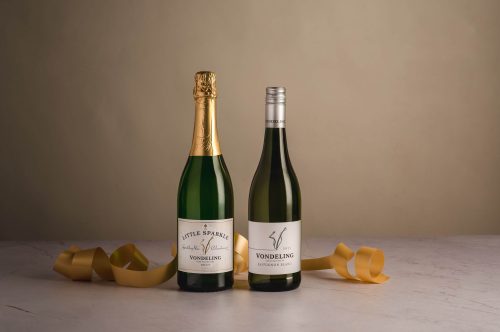
Festive Summer Gift Pack (2 pack option)
R375.00 (incl. VAT)
Little Sparkle (100% Chardonnay Sparkling Brut) & Option 1: Sauvignon Blanc 2024 OR Option 2: Petit Chenin Blanc 2024 OR Option 3: Petit Rouge Merlot 2022 OR Option 4: Baldrick Shiraz 2022 Packaged in a sophisticated, branded 2-pack cardboard wine carrier, finished with ribbon & fynbos from the farm. -

(Limited to 15 cases only)
(80% Chardonnay & 20% Pinotage) VINEYARDS Vondeling Rurale is comprised of 80% Chardonnay and 20% Pinotage. The Chardonnay grapes originate from a single block, located on a south-west facing slope on the decomposed granite soils of the Paardeberg Mountain. The Pinotage grapes are grown on our lower valley slopes in soils comprised of gravel and clay. Typically, the Pinotage grapes add weight and texture. Unlike Mèthode Cap Classique, Mèthode Ancestrale grapes are harvested with a potential alcohol of 12% (rather than 9%). This promotes a fuller, more rounded pallet with superior fruit expression without compromising on natural vibrancy and freshness. VINIFICATION Natural fermentation begins in a stainless-steel tank and when only a small, but critical amount of sugar remains, the fermenting wine is bottled and capped. Bottling must be done at the precise moment when there is enough remaining sugar to create a healthy, vibrant mousse, but not so much as to cause the bottles to explode. This single, continuous fermentation, using fruit which is approximately three weeks riper than the base wine used to make Mèthode Cap Classique, is what makes Mèthode Ancestrale unique. The wine is matured on its lees for 3 years before riddling and disgorging. Autolysis of the yeast cells increases richness, palate weight and creaminess to the wine. After being hand riddled over a one-month period, it is disgorged and topped using our flagship white blend, Babiana from the 2013 vintage, as an alternative to liqueur d’expedition. The name Rurale is the original name for what was later recognized by the French A.O.C as Mèthode Ancestrale. We love the implication that this is an uncomplicated, yet pure expression of both the grape and its origins. Rurale was the first recognized Mèthode Ancestrale to be produced in South Africa and remains the leaded in this category. Vondeling was instrumental in drafting the technical description, which allowed this new category to be recognized in 2014. It is a highly labour-intensive way to produce sparkling wine, and for this reason, only 3300 bottles were produced. All grapes are grown and vinified on Vondeling Farm and Cellar TASTING NOTES & CELLARING & FOOD PAIRING The wine displays a pale straw colour typical of bubbly that has enjoyed the benefits of extended lees maturation. Tiny, pearl-string bubbles and fine mousse abound. Beautiful aromas of lavender honey, lime, crisp apple with freshly baked pastry and toasted almonds on the nose. The palate is bright and zippy with vibrant acidity and a soft, creamy mouthfeel. Fresh apple appears again along with pears, confected lemon and a long, rich, lingering after taste. Rurale can be paired with smoked salmon, fennel roasted trout or fresh oysters with a squeeze of lemon, salt, and pepper. ACCOLADES 2018 Vintage: 2021 SA Sparkling Wine Championships – Double Gold 2021 Michelangelo- Gold 2022 Platter Wine Guide 2020 – 4,5 stars (93pts) ANALYSIS pH 3.37 Total Acidity 8.0 g/l Residual Sugar 4.7 g/l Alcohol 11.94 % DOWNLOAD TASTING NOTE -
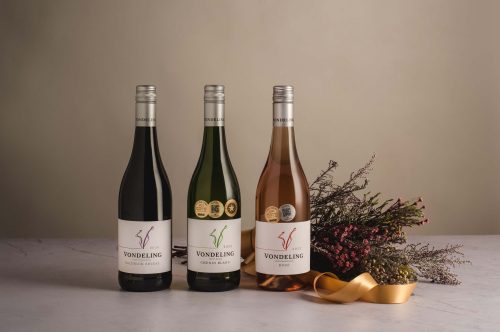
Petit Gift Pack (3 pack option)
R460.00 (incl. VAT)
Option 1: Petit Chenin Blanc 2024 & Rose 2024 & Petit Rouge Merlot 2021 OR Option 2: Petit Chenin Blanc 2024 & Rose 2024 & Baldrick Shiraz 2022 OR Option 3: Sauvignon Blanc 2024 & Rose 2024 & Petit Rouge Merlot 2021 OR Option 4: Sauvignon Blanc 2024 & Rose 2024 & Baldrick Shiraz 2022 Packaged in a sophisticated, branded 3-pack cardboard wine carrier, finished with ribbon & fynbos from the farm. -
Out of stock
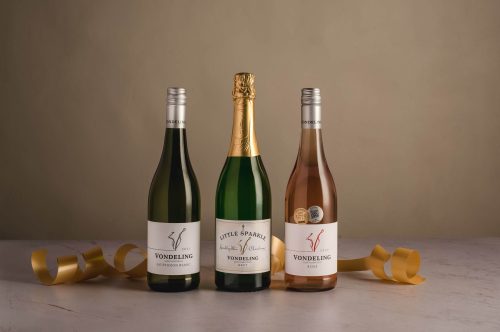
Petit Gift Pack (3 pack option)
R460.00 (incl. VAT)
Petit Chenin Blanc 2024 OR Sauvignon Blanc 2024 & Little Sparkle (100% Chardonnay Sparkling Brut) & Rose 2024 Packaged in a sophisticated, branded 3-pack cardboard wine carrier, finished with ribbon & fynbos from the farm.

